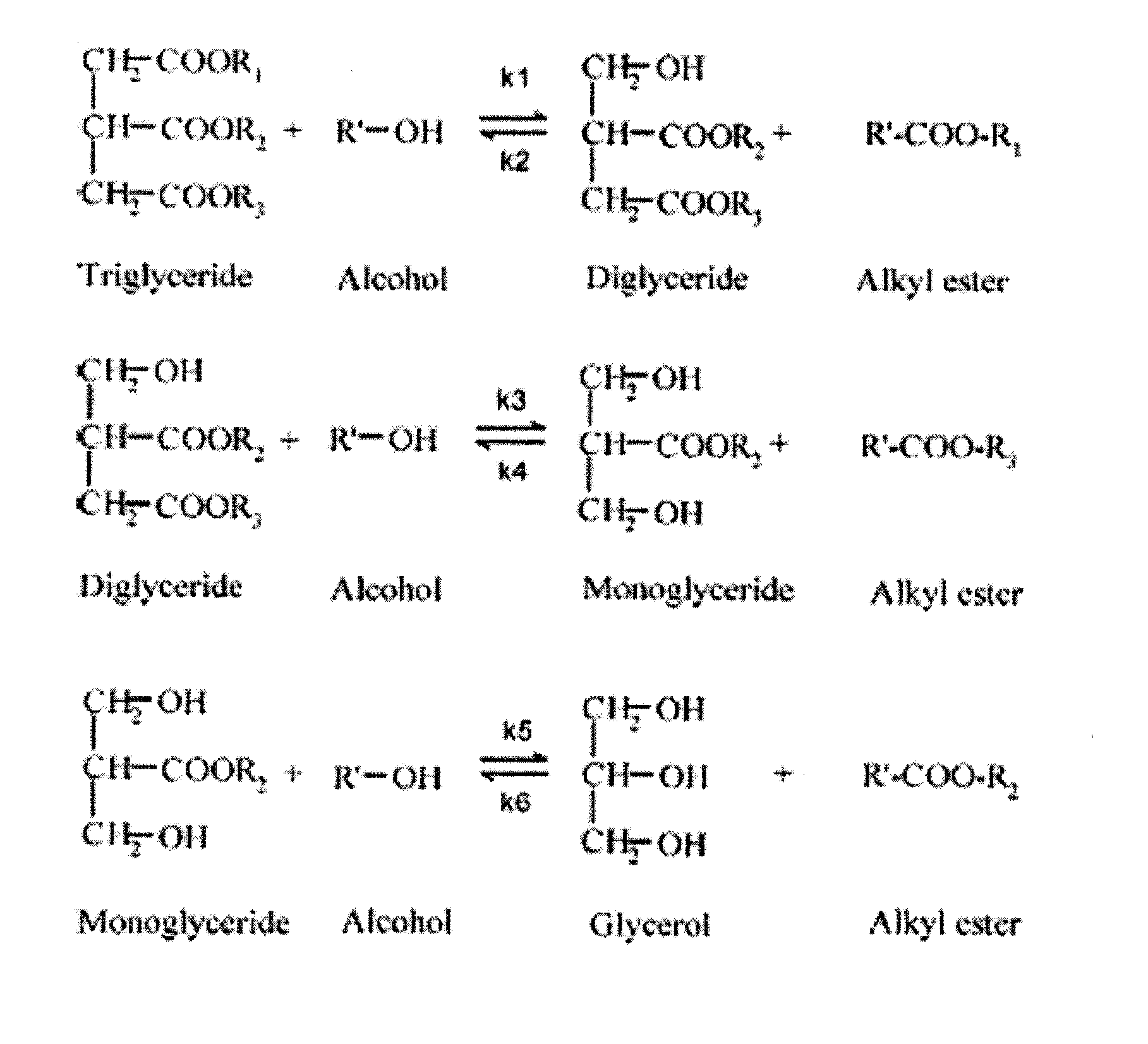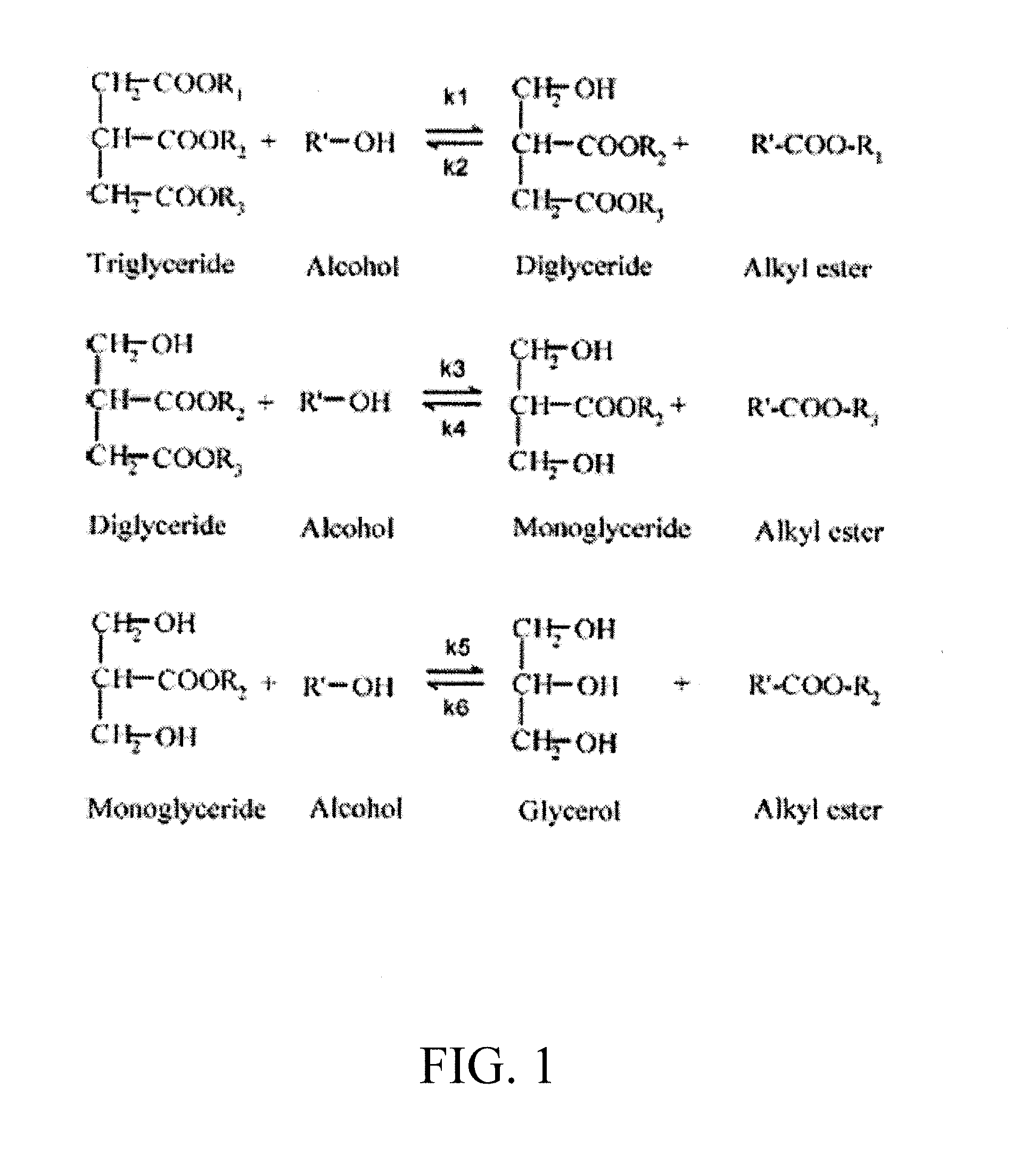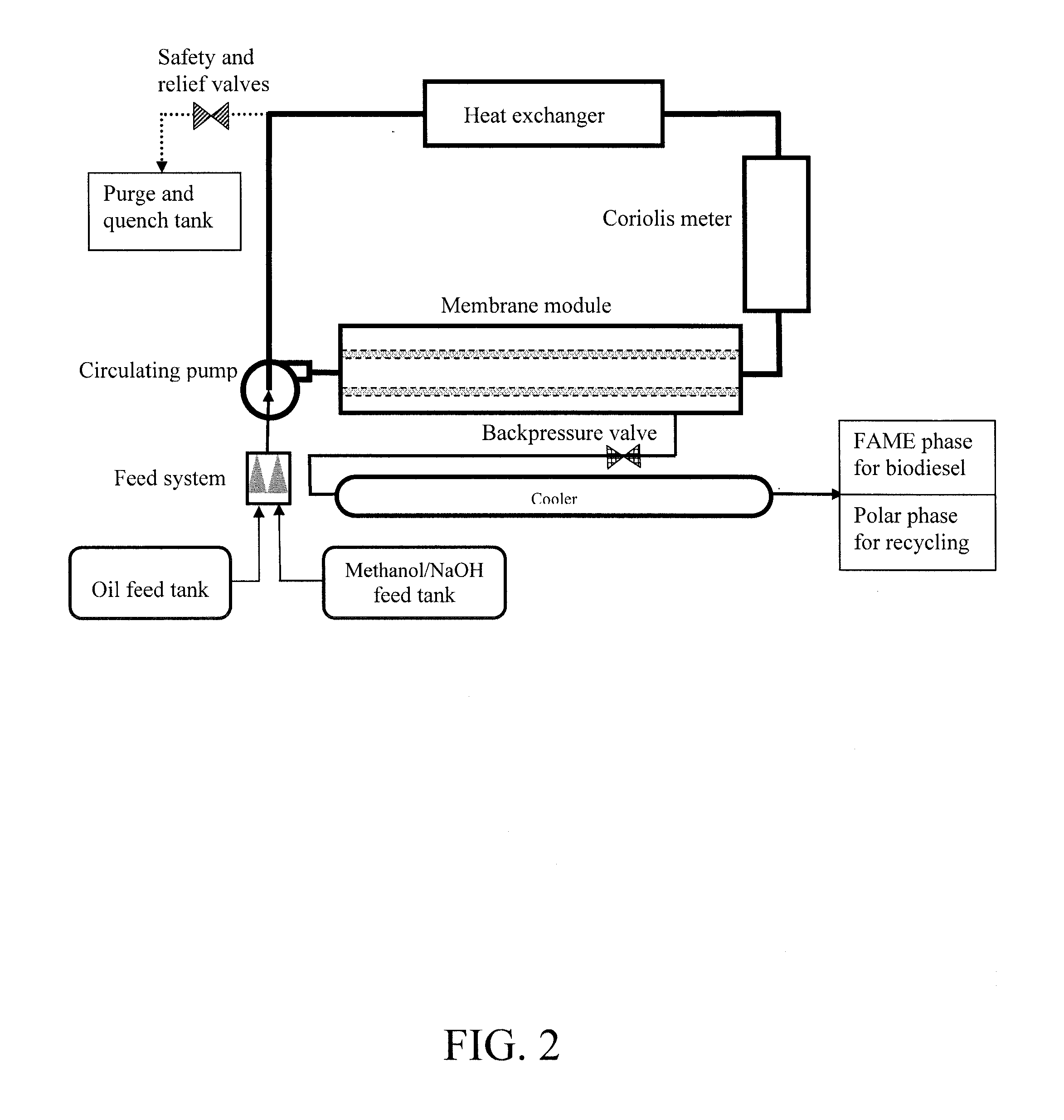Biodiesel production using ultra low catalyst concentrations in a membrane reactor
a biodiesel and membrane reactor technology, applied in the field of biodiesel production, can solve the problems of high material and processing costs, low catalyst concentration, and insufficient carrying over of non-volatile free-radical scavengers, such as tocopherols (vitamin e and its derivatives normally present in oils) in the distilla
- Summary
- Abstract
- Description
- Claims
- Application Information
AI Technical Summary
Benefits of technology
Problems solved by technology
Method used
Image
Examples
Embodiment Construction
[0032]Generally, the present invention provides a method and system for method for producing a fuel or fuel additive. The method comprises providing a reaction mixture comprising oil and an alcohol in an oil-in-alcohol emulsion and a catalyst for converting the oil to the fuel or the fuel additive. The oil and the alcohol are reacted in the presence of the catalyst, present at a concentration below that used in a conventional batch and some continuous processes, to produce the fuel or fuel additive. The fuel or fuel additive produced is continuously removed during the reaction.
[0033]Advantageously, by de-coupling the catalyst concentration with the rate of conversion, a lower amount of catalyst can be used, and the reaction proceeds toward conversion. By constant removal of product, the conversion equilibrium continues to proceed unidirectionally toward formation of product without requiring high quantities of catalyst. Increasing the time spent in a reactor permits a further reduct...
PUM
| Property | Measurement | Unit |
|---|---|---|
| temperature | aaaaa | aaaaa |
| wt % | aaaaa | aaaaa |
| temperatures | aaaaa | aaaaa |
Abstract
Description
Claims
Application Information
 Login to View More
Login to View More - R&D
- Intellectual Property
- Life Sciences
- Materials
- Tech Scout
- Unparalleled Data Quality
- Higher Quality Content
- 60% Fewer Hallucinations
Browse by: Latest US Patents, China's latest patents, Technical Efficacy Thesaurus, Application Domain, Technology Topic, Popular Technical Reports.
© 2025 PatSnap. All rights reserved.Legal|Privacy policy|Modern Slavery Act Transparency Statement|Sitemap|About US| Contact US: help@patsnap.com



